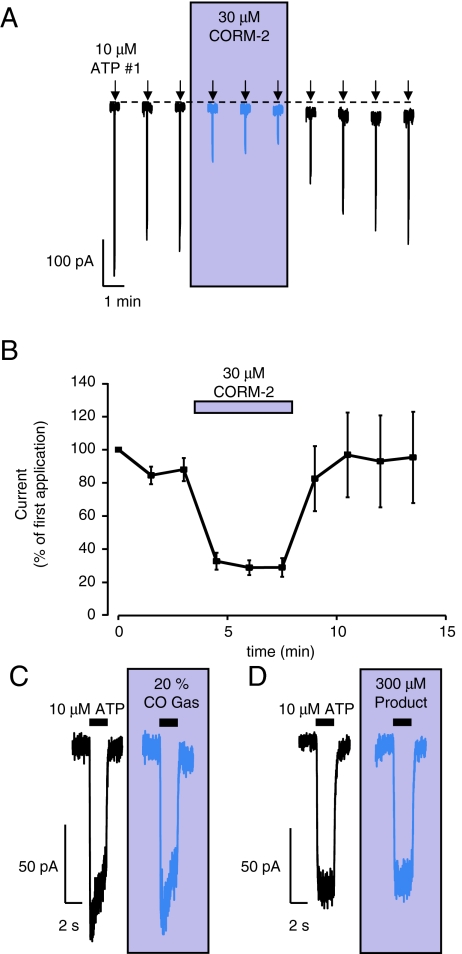Fig. 2.
Inhibition of human P2X4 currents by CORM-2 using conventional whole-cell patch configuration. a Typical time-course of currents evoked by repeated applications of ATP (10 μM, 2 s) at 90-s intervals, as indicated by the arrows. CORM-2 (30 μM) was applied for 1 min prior to the fourth application of ATP and continuously perfused until 30 s after the sixth application, as indicated by the shaded box. b Mean (±s.e.m.) inhibition by 30 μM CORM-2 in experiments exemplified in a. Mean responses are shown as percentage of first response (n = 24). c Typical currents, shown on a faster time-base, of the lack of effect of a 20% saturated CO gas solution applied for 1 min on currents evoked by 10 μM ATP (2 s; black bar). On the left is control response and on the right is response during CO gas application (shaded box). d Typical currents, shown on a faster time-base, of the lack of effect of 300 μM RuCl2(DMSO)4, a control breakdown product of CORM-2, which is unable to donate CO, applied for 1 min on currents evoked by 10 μM ATP (2 s; black bar). On the left is control response and on the right is response during 300 μM RuCl2(DMSO)4 application

